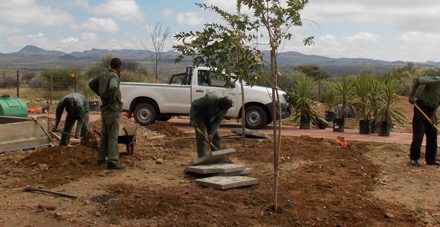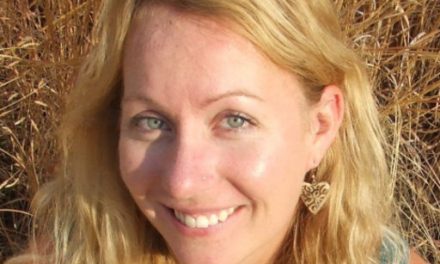
Giraffe foal without spots arrives at Mount Etjo

Spotless giraffes, although an extreme rarity, may not be so unimaginable after all with two spotless arrivals announced only about a month apart.
The week, the Giraffe Conservation Foundation revealed that a fawn-coloured baby giraffe, devoid of any spots, has been born at the well-known Mount Etjo private game reserve in the Erongo region. This follows in the wake of a similar occurrence at an American zoo about one month ago.
“Each giraffe has a unique pattern, which makes them individually identifiable. This trait helps us greatly in counting them and with the help of AI programmes, we can determine exact giraffe numbers even for large populations,” said Stephanie Fennessy of the giraffe foundation.
With the newly-arrived spotless baby, it will indeed be difficult to identify her by her spots. “Luckily, giraffe without spots are a rare phenomenon. Indeed, before the discovery of the Namibian spotless giraffe, there were only two records of such brown giraffes, in a zoo in Japan in 1972 and most recently in the USA.”
While this extraordinary plain brown giraffe has intrigued many people, it has not helped to draw attention to the real issue that giraffe are facing – a silent extinction.
Today, there are an estimated 117,000 giraffe left in the entire Africa, and adding to their perils is the fact that the African populations actually represent four distinct giraffe species, so some of them are acutely in danger of extinction. As a comparison, there are roughly three times as many elephants are there are giraffe.
“The lack of spots could be caused by genetic mutations or recessive genotype in one or more genes related to the pattern, but without detailed genetic analysis, these are mere speculations. The Giraffe Conservation Foundation (GCF) together with their partner, the Senckenberg Biodiversity and Climate Research Centre, has done the most detailed research on giraffe genetics in the wild, but it would be difficult to comment on the specifics of these two giraffe,” says Dr Julian Fennessy, GCF’s Co-founder and Director of Conservation.
“Maybe we do not always need to have explanations for everything. Why don’t we simply marvel about the wonders of nature?!” added Stephanie.
“Giraffe are in trouble and if we don’t act now, our grandchildren might not be able to see any giraffe in the wild when they grow up. That is what really worries me! But the good news is that it is not too late! If we act now, we can all stand tall for giraffe and secure a future for these gentle giants in the wild,” she warned.
 A baby giraffe without spots was recently born at Mount Etjo. About a month ago, a similar occurrence happened at a zoo in the United States. (Photograph by Eckart Demasius for the Giraffe Conservation Foundation)
A baby giraffe without spots was recently born at Mount Etjo. About a month ago, a similar occurrence happened at a zoo in the United States. (Photograph by Eckart Demasius for the Giraffe Conservation Foundation)












































